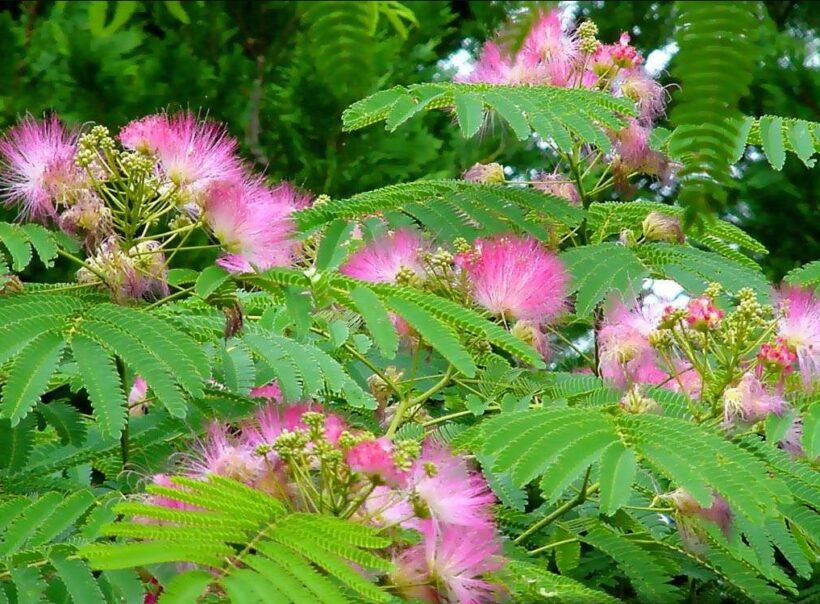The 7 Incredible Things about Mimosa Hostilis
Mimosa Hostilis is a native northeastern Brazil perennial tree and has been widely known to the public for its root bark. Its root bark is one of the South American entheogenic brew’s main ingredients, it is claimed to have mind-healing properties that help users get past trauma and even overcome depression. If you were looking for any information about this plant, below you will find the 7 benefits of the Mimosa Hostilis.
Natural Antibiotic
This plant’s healing properties don’t end at burns and cuts, as the plant has natural anti-inflammatory and natural antibiotics properties. These will help prevent infections while healing several types of wounds or illnesses.
Moreover, Mimosa Hostilis root bark powder has excellent antimicrobial and antifungal properties, which make it very hard for fungus, bacteria, and harmful infections to settle in. That’s why this plant is one of the main ingredients in a vast variety of health products, such as:
- Acne creams,
- Herpes creams,
- Eczema creams
- Hair loss products.
Aside from creams and hair loss products, other plants of the same family such as the Tepezcohuite (Mimosa tenuiflora) are used for treating stomach illnesses, vaginitis, and fungal infections.
Wellness & Cosmetic
The Mimosa Hostilis is also called the tree of skin, whose name speaks for itself. In the cosmetic industry, it can be used in many formulas for the improvement of skin health as It has strong antiseptic properties.
Moreover, there are many powders and topical ointments that are available for the treatment of psoriasis and acne. The exceptional plant is used as the main ingredient in making cosmetics and wellness products such as serums, face masks, soap shampoos, and conditioners.
Holistic Mental Health
The root bark of the Mimosa Hostilis has long been a holistic herb used for anti-depressing and mood-stabilizing purposes. Indeed, it offers a soft anxiolytic healing power, helping to calm a troubled heart, lightening up the spirit, and helping people with insomnia, grief, sorrow, irritability, as well as anger.
Furthermore, the root bark has quite a significant amount of DMT (dimethyltryptamine), which is one of the most well-known psychedelics in the world. DMT can be used to help patients recover from trauma, depression, and even severe mental illnesses such as post-traumatic stress disorder.
Strong Immune System
Bacteriae can go hidden, wreaking havoc on your immune system. The seeds of the Mimosa hostilis contain an efficacious substance to help you strengthen your immune system, and successfully prevent conditions that could keep you under the weather.
Also, the presence of alkaloids, lipids, saponins, glucosides, lupeol, phytosterols, arabinose, and rhamnose provides the necessary for your immune system to beat many illnesses.
High Historical Value
This plant has been around for ages in South American Culture and has been used for many things over the years. It is a staple of holistic medicine among the natives of Brazil and Mexico. The plant is also known under different names, such as Juremae, Tepezcohuit, Calumbi, and Carbonal.
Natural Dye
Mimosa Hostilis root bark powder is even used as a dye, as it produces phenomenal shades of browns and purples. It has beautifully vibrant pigments, which makes it an excellent textile dye that provides natural long-lasting, and consistent results.
The amount you use and the method of dying depend on the dye itself. Using Mimosa Hostilis root bark powder can give you various vibrant shades from light reds to rich purples, and everything in between.
How to dye with Mimosa root?
To use Mimosa root as your dye base, just soak small pieces of the root in a pot of water. You can boil the water and simmer for about an hour, or let it soak overnight without any heat. Once it soaked for long enough, just remove the pieces or the powder in order to keep only the dyed liquid. Be careful, the more you let your pieces or your powder sit in the water, the stronger your color is going to be.
Does Mimosa Hostilis have good taste?
As we mentioned before, this plant’s root bark extract is consumed for many reasons, but more than that, it is undeniably very delicious. Unlike with other natural herbs and psychedelics, people seem to not have any trouble stomaching the Mimosa Hostilis.
One of the most popular recipes consists of brewing the bark with honey and lemons, which should give you a delicious drink.
Our Final Thoughts
This plant is one of the best holistic herbs and psychedelics out there with some massive health and wellness benefits, as well as being a staple of natural medicine since the ancient days. And not only that, you can even use it as a natural dye, a cosmetic agent, or an effective anti-biotics.
The Mimosa Hostilis is pretty easy to find at your nearest herbalist or online. Getting into this plant is easy, and once you do so, you can experience a multitude of health benefits for your body in a matter of mere hours. Happy brewing everyone!

No Comments